Coin Values Moving with Precious Metals: Up-Dated 4/14/2025: Gold $3226 | Silver $31.88
1923 Penny Value
A sought-after variety to 1923 penny value is "S" mint marked issues from the San Francisco mint. Low production is reflected in high minimum values on the charts.
Identify and judge: Date | Mint Mark | Condition to find your coin on the value chart.
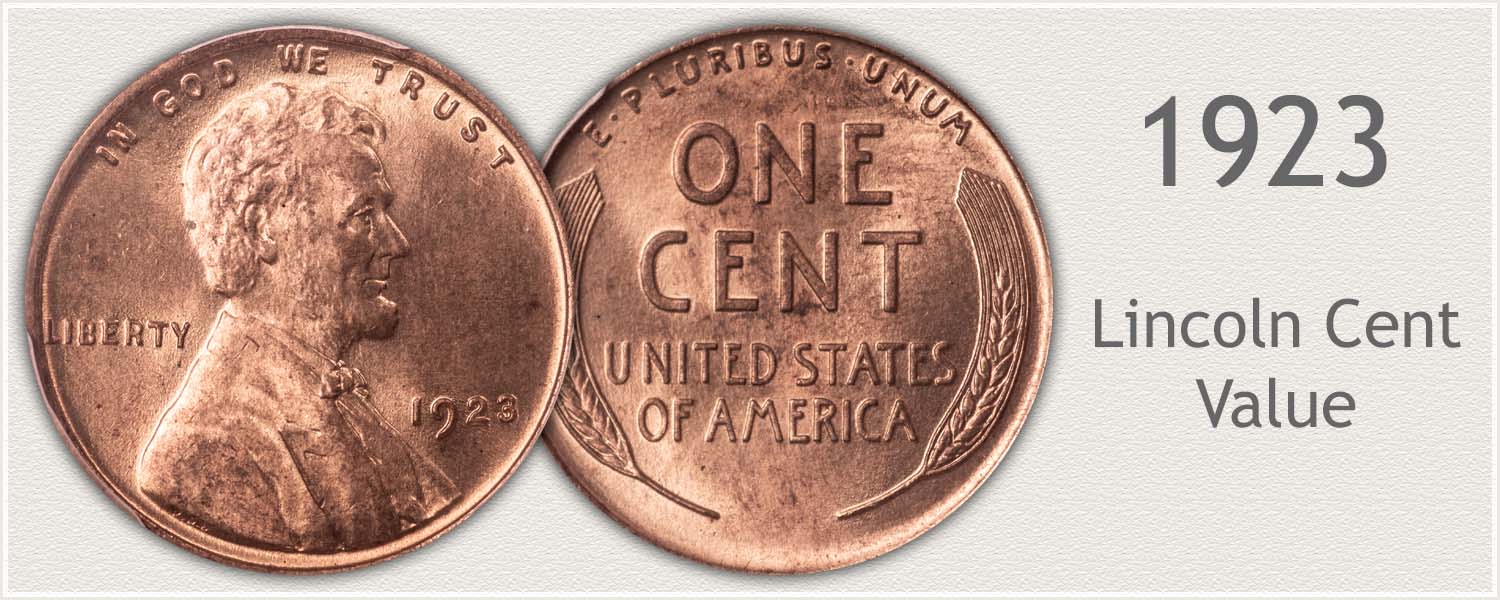
Steps Leading to Value:
- Step 1: Date and Mintmark Variety – Identify each date and its mintmark variety.
- Step 2: Grading Condition – Judge condition to determine grade.
- Step 3: Special Qualities – Certain elements either enhance or detract from value. Important features are described and imaged.
| 1923 Lincoln Penny Value | ||||
|---|---|---|---|---|
| Condition of Coin | ||||
| Date | Good | Fine | Extremely Fine | Uncirculated |
| 1923 Lincoln Penny Value Up-Dated | 2025 | |||
| 1923 | $0.32 | $0.73 | $4.77 | $14 |
| 1923 S | $3.92 | $6.50 | $37 | $207 |
Three main areas of the coin are important to identify. Moving through these steps in order arrives at an accurate value.
Date: As a popular series, attention to accurate date and mint marks is needed.
Mint Mark location is imaged to identify.
Condition of old pennies is found in a range from heavily worn to Uncirculated - like new. Collectors favor and seek coins with the least amount of wear. A range of values across the chart reflects the differences in grade.
Step 1: | Date and Mintmark Combination
Value in Mintmarks Defines 1923 Penny Value
Two varieties of wheat cents were minted in 1923; Philadelphia and San Francisco. One is rather elusive. Normal production of cents was overshadowed by gold production at the Denver mint. Normally contributing millions of pennies, it spent the year preparing and refining gold and silver and striking it into double eagles and silver dollars.
1923 Lincoln Penny
No Mintmark Under Date: Philadelphia Mint Struck the Coin
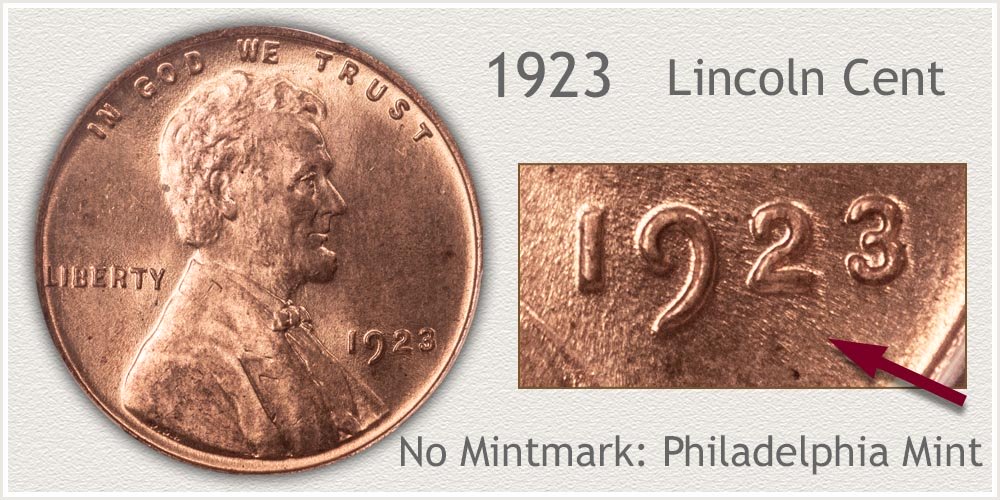
A 1923 penny is one of the frequent dates encountered in the early era of the series. Considered on a rarity scale as: Abundant. It is also a year that comes with certain issues as to quality. Many millions were minted (74,723,000) and those surviving today are generally in a very worn condition.
The value chart emphases the importance of recognizing nice condition examples. Interest in these early cents, ones fairly available, is focused on grade of the coin. An important next step is the grading section below.
1923-S Lincoln Penny
"S" Mintmark Under Date: San Francisco Mint Struck the Coin
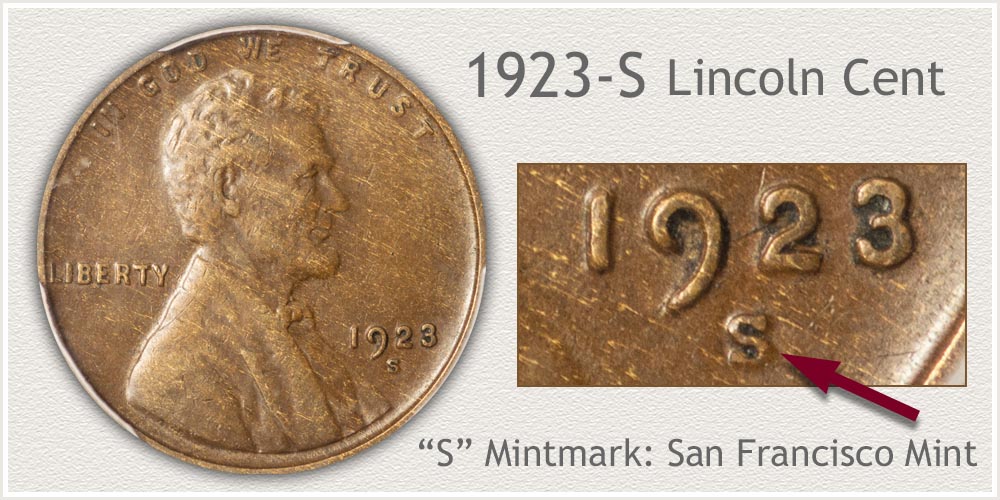
San Francisco issue 1923 cents are an elusive coin. In all grades these are valued by collectors. Coins with finer detail remaining are difficult to find. Part of the challenge is many of these coins lack sharp definition. Inspect the reverse, wheat stalks with clear grains showing is a premium coin.
Value grade is Fine and above. A sequence of images showing the effects of wear to a coin is found below, part of the next step.
Step 2: | Judge Condition to Identify Grade
1923 Penny Value is Grade Specific
Grade of a collectible coin is one part of the factors used in determining value. A coin's state of preservation in judged to arrive at a grade, a defining term use among collectors. Listed on the value chart are Grades ranging from Good to Uncirculated. Following are images used to identify the grade of wheat cents.
Of concern is preservation of condition. Proper storage in a dry location is an important part to maintaining value. Copper is prone to turn a dark shade of brown, sometimes very dark if exposed to humid air. A container with a tight lid does a good job of keeping these old pennies from the atmosphere.
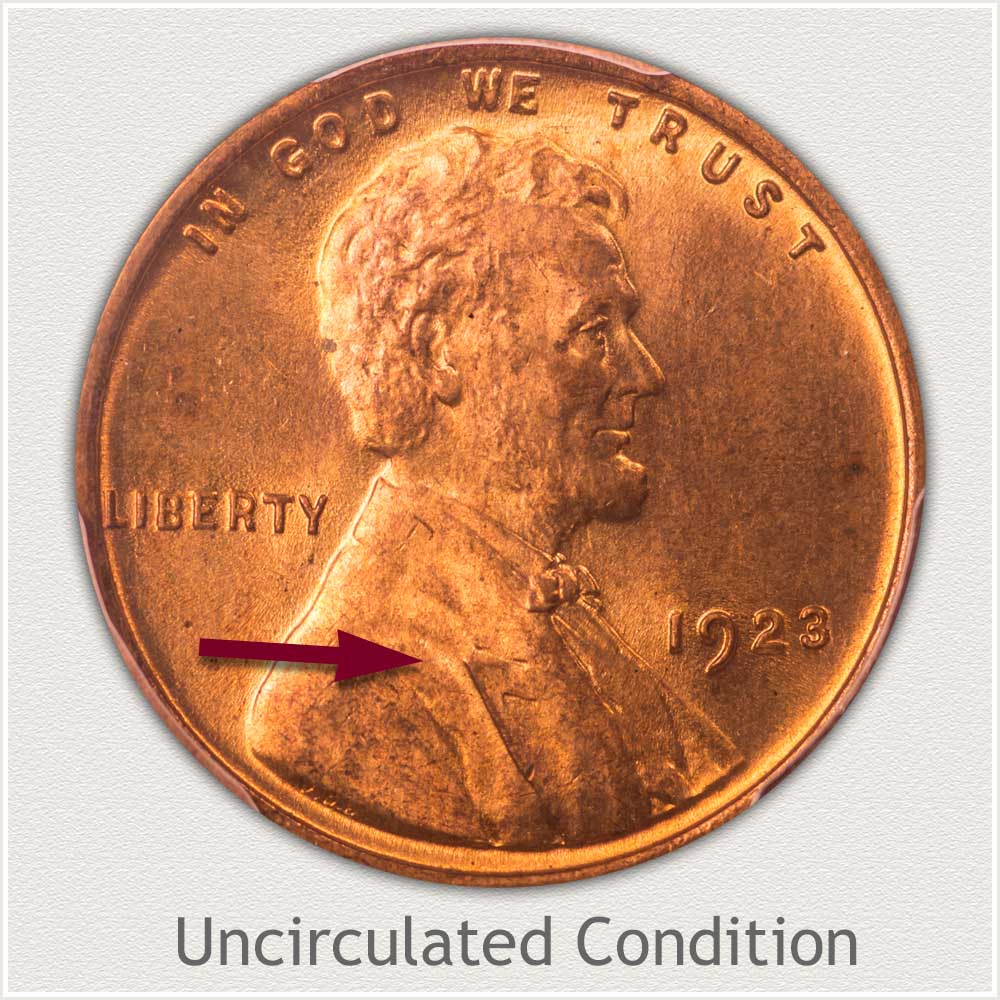
Uncirculated Grade: Identifying an uncirculated - mint state grade wheat cent recognizes complete coverage of mint luster over the entire surface of the coin. Luster is a delicate texture on the metal, the result of the striking process. Handling a coin removes luster and shine from the highest design areas.
Inspecting Lincoln's coat finds a very high-profile line indicating a lapel. A folded edge of the lapel separates the shirt, prone to wear. Judge all luster remains along the leading edges of the lapel from the collar downward.
An early date wheat cent in mint state grade is a prize to collectors. Eye appeal is an important part to value. The 1923 Lincoln cent pictured features bright surfaces with even light toning.
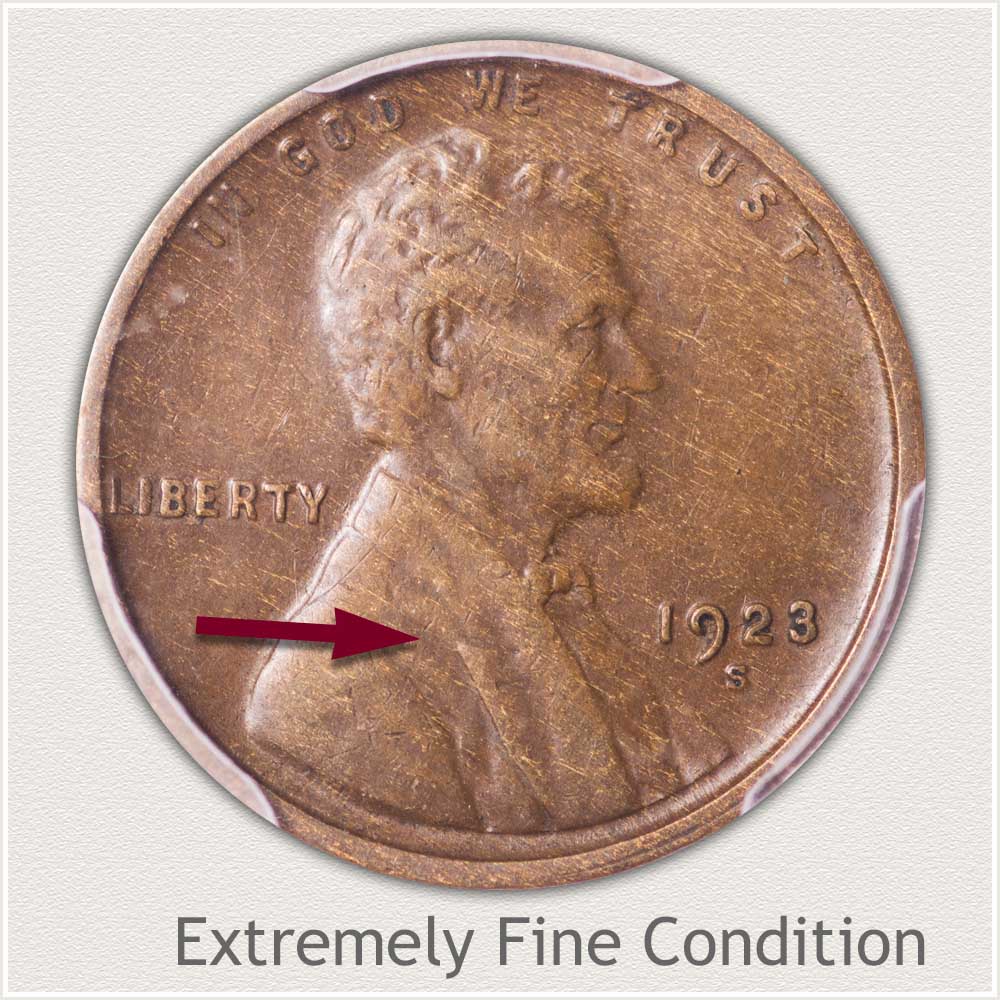
Extremely Fine Grade: After entering circulation, wear begins to flatten high profile surfaces of wheat pennies. Moderate amounts of wear define a coin in Extremely Fine grade.
Part of Lincoln's coat is a lapel with an edge over the coat and fold separating the shirt. Both of these elements are high relief and show a moderate amount of wear in the extremely fine grade. Important is a full, distinct line of separation of lapel and shirt.
Lightly circulated wheat cents are a collectible grade. Adding to value are examples with bold features and many fine details remaining. The example displays major contours remaining with distinct waves of hair defined. A pleasing brown toning helps highlight finer details.
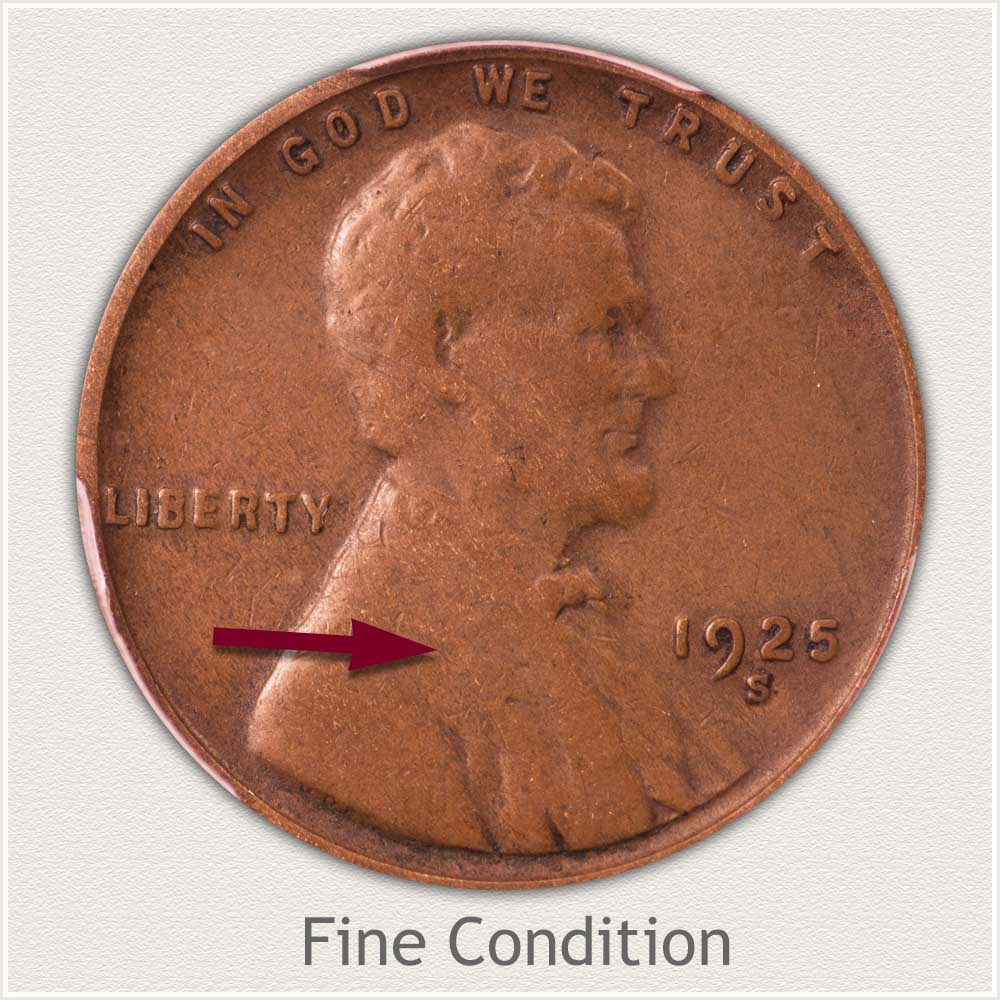
Fine Grade: Heavy wear is evident in the central areas of a wheat cent in Fine grade. Condition along the outer edges is typically moderately worn with major details remaining.
Lincoln's coat is flattened from wear; however, a lapel is visible beginning at the bowtie and extending downward. Contours of high and low separate the lapel line at the coat and shirt with a faint valley in between.
A positive eye appeal is displayed by the example wheat penny. No large marks are found and strong legends and date remain.
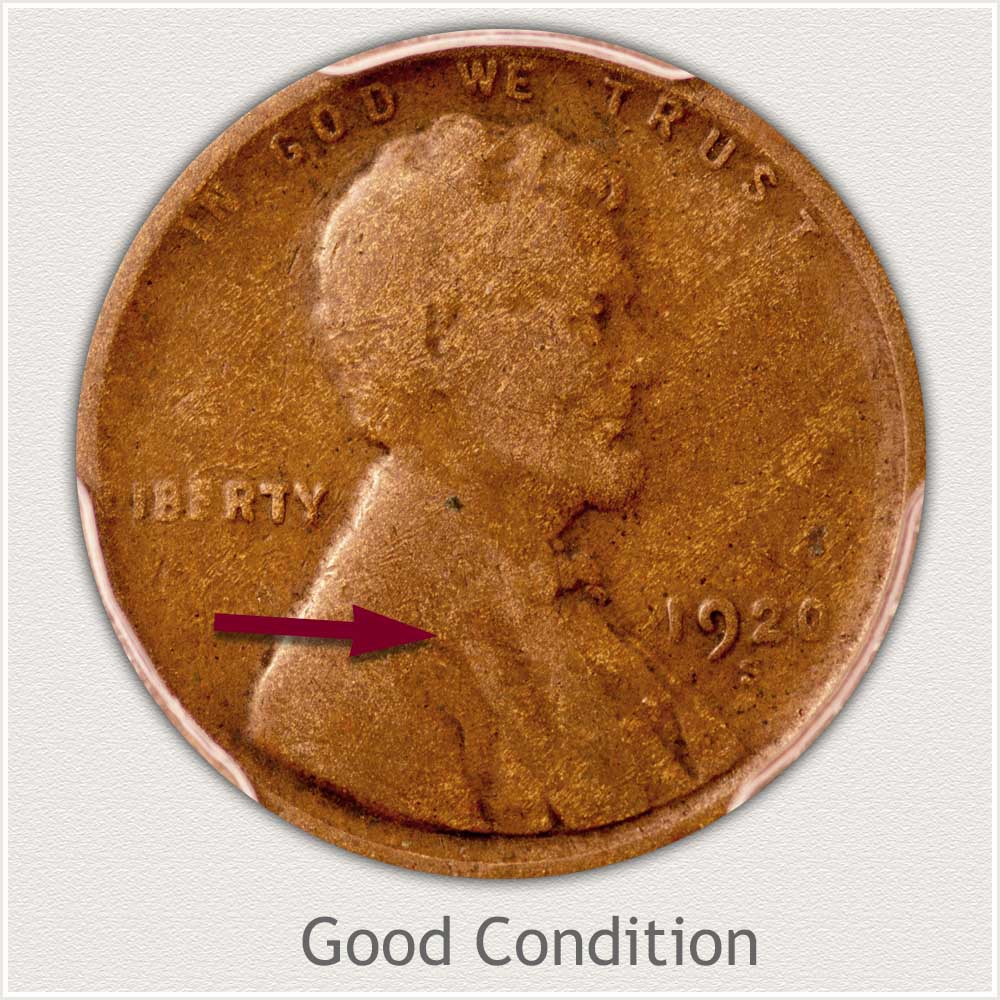
Good Grade: Heavy wear lowering the design to connected flat areas is a wheat cent in Good grade. Lincoln's cheek and jaw are not connected. Most of the detail within his hair is missing.
A flat area extends along Lincoln's back merging all lines of his coat. Just traces of the lapel design are remaining. Coat and lapel detail below the bowtie extending to the rim is better defined placing this coin solidly in the good grade.
Bold features remaining on a coin in good grade add to appeal. Although heavy wear is present, details of the legend and date are readable. Lincoln's portrait is raised from the field and a nice lighter shade of toning covers the surface.
Video | Grading Lincoln Wheat Pennies
Detecting wear and condition by examining all parts of the coin's surface confirms a grade. As values climb higher many additional factors are used to decide the grade and worth.
Grading Lincoln Wheat Pennies covers the grading process in greater detail. Video examines grading examples. Descriptions point to elements to establish a grade.
Step 3: | Special Qualities Enhancing Value
Elusive Eye Appealing 1923 Penny
Old pennies dating from the 1920's suffer from many distracting features because of age. Copper is prone to many problems; notability, discolors quickly and is easily dented and marked.
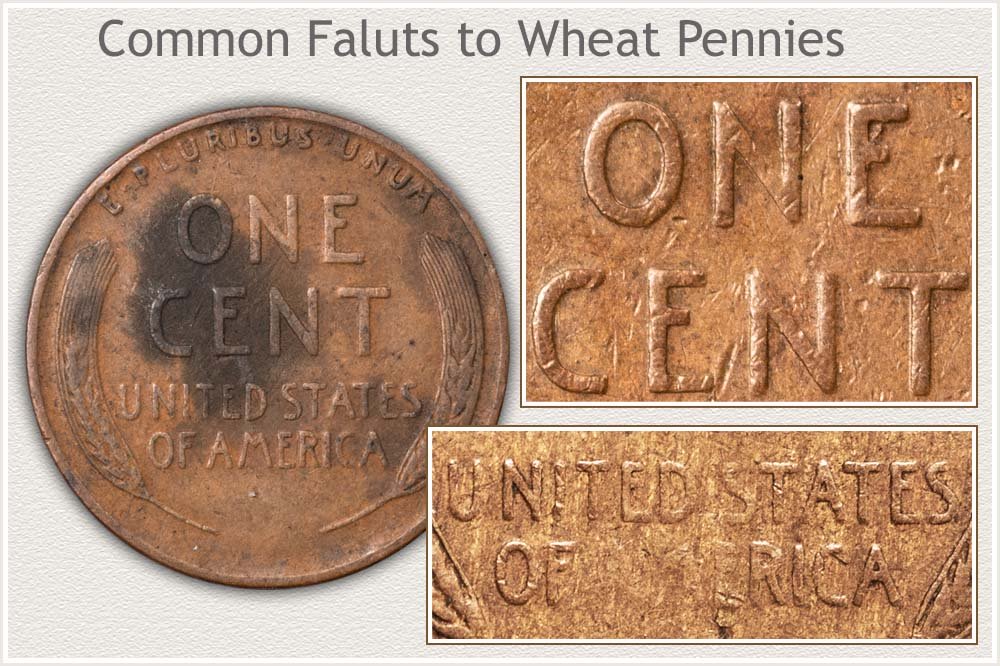
A strong market for early wheat pennies exists. Standout circulated examples are popular to collectors assembling sets of each date and mint. Care is taken when choosing a coin to add as part of a collection.
First to notice is the wide band of dark color covering the reverse, presenting an uneven toning. Collectors place higher values on coins without discoloration.
Large marks are highly visible on the reverse of the second penny. Circulation marks are almost unavoidable, typically small in size and scattered. However, larger marks that standout are close to the definition of damage. This coin is lower in appeal
The third coin represents a weakly struck cent. Further reducing the chances of becoming an eye appealing coin is a lower quality strike. Normal bold devices and lettering were not impressed into the coin during the minting process. Circulation contributed wear to the surface combining to produce an uneven look.
A challenge faced by collectors is finding coins without any problems. Importantly to value; eye appealing coins, accurately graded are in solid demand. A 1923-S penny, just lightly circulated is sought by collectors. An example with even toning, lack of distracting marks, and a well-defined strike is well received.
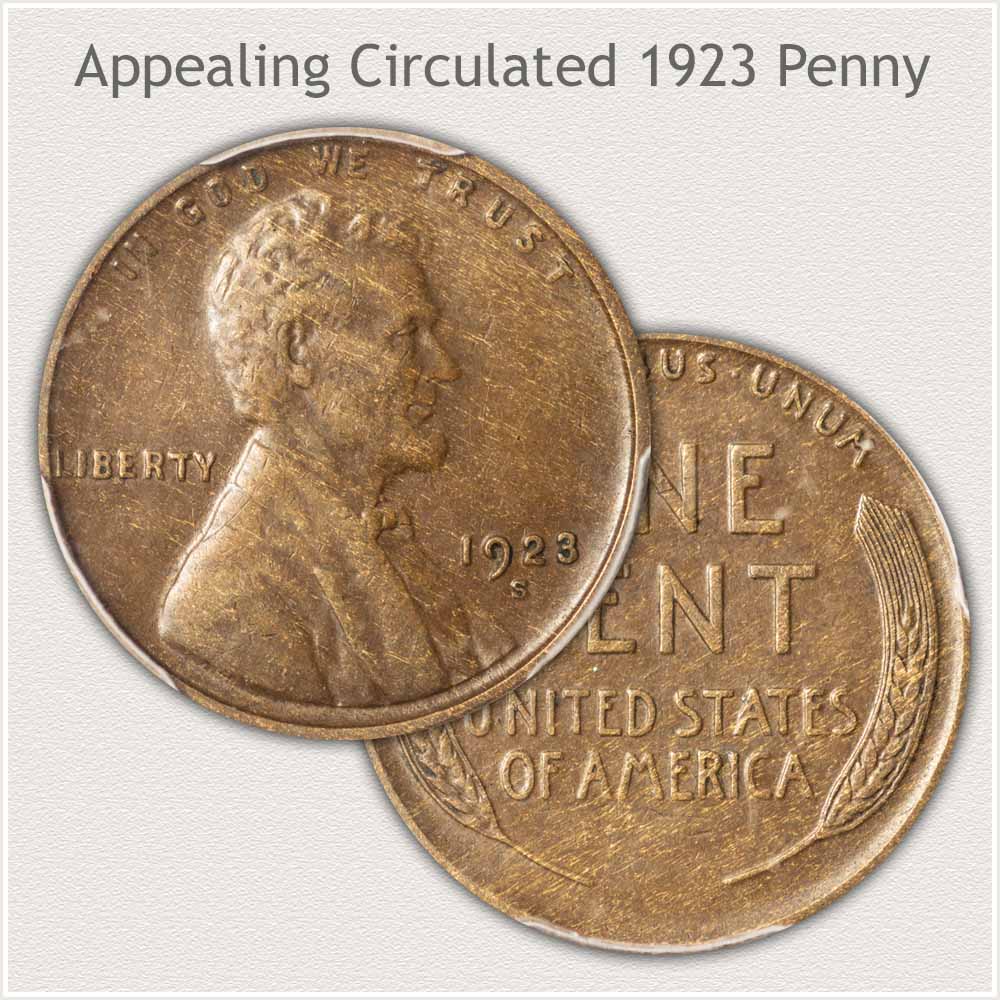
US Mint. 1925 US Mint Annual Report https://nnp.wustl.edu/library/publisherdetail/51
Coin Values | CoinStudy Articles
Lincoln Wheat cents span the years 1909 through 1958. From the top condition coins collected by advanced collectors to worn examples; to an affordable collection for young collectors, the range of value is extensive. Identify your date, mint and condition and refer to the value chart.
Coin Value Guide | How to Value a Coin Collection
A step by step method combined with the coin value online guide identifies how to value a coin collection. Discover how much your box of old coins is worth.
★ Coin Values Discovery finds 1923 Penny Value and...
All US coin values. Recognize your old coins using the image links leading to value charts. Date | Mintmark | Condition are considered; all described and imaged within each series. Surprising value is often found in the smallest of detail.